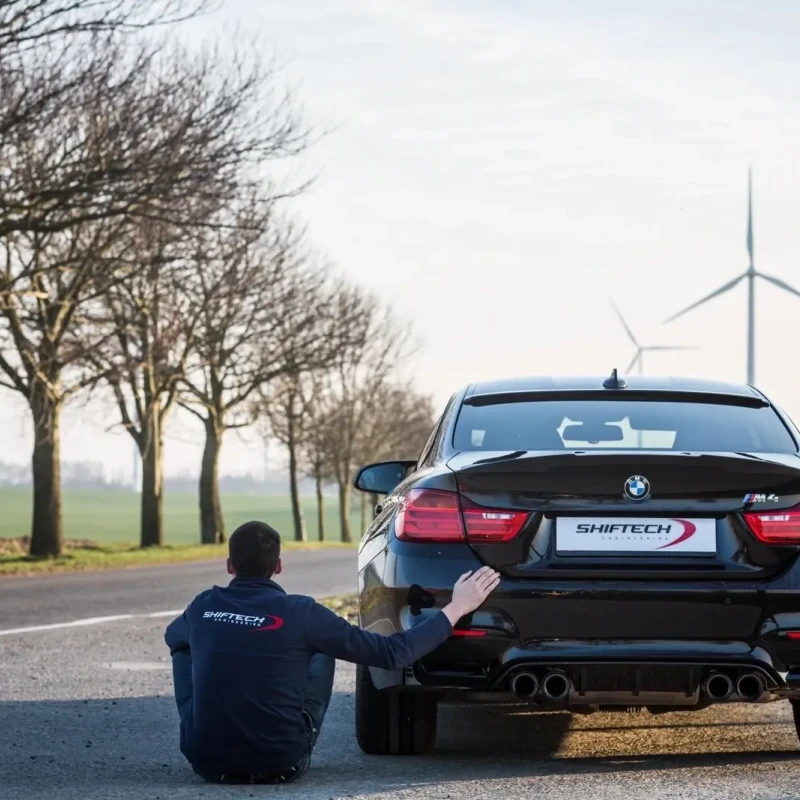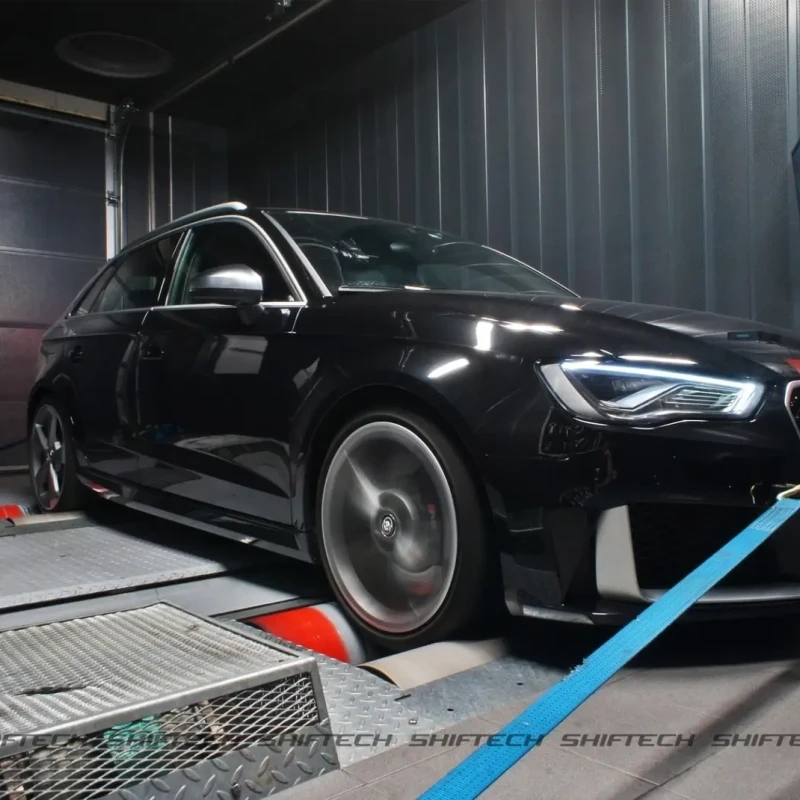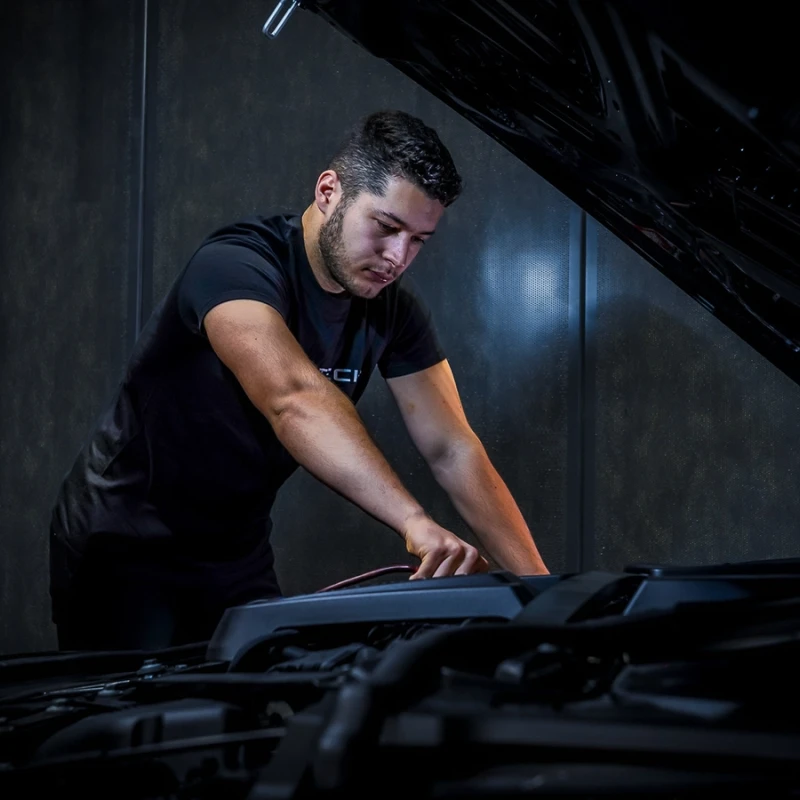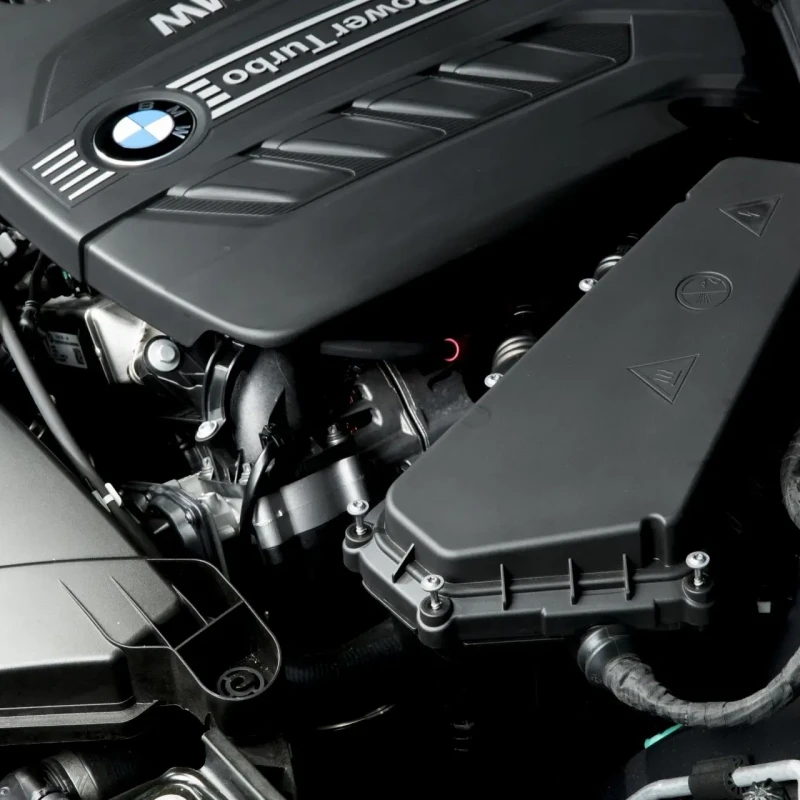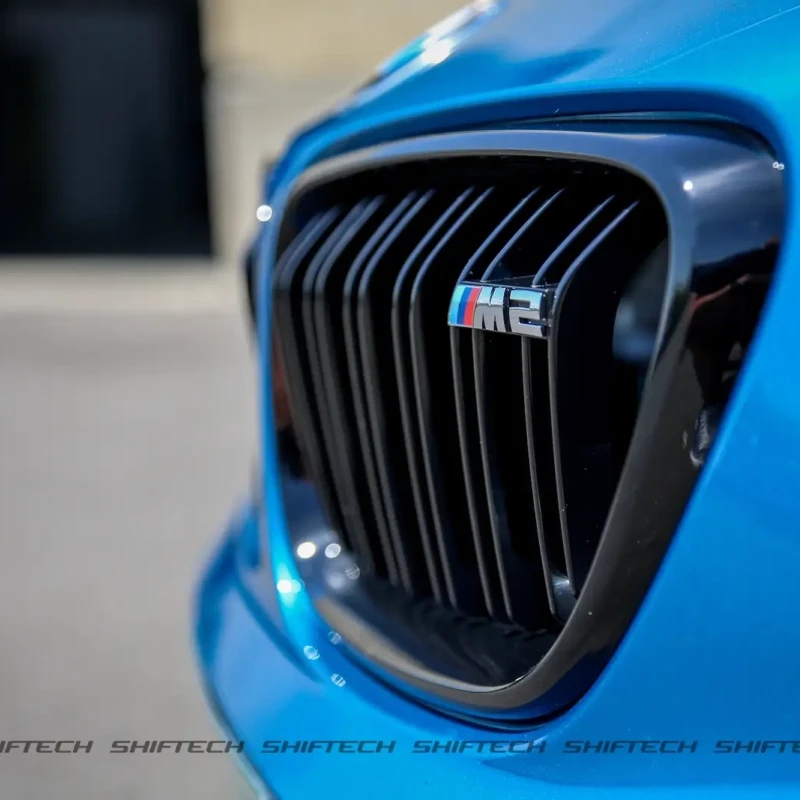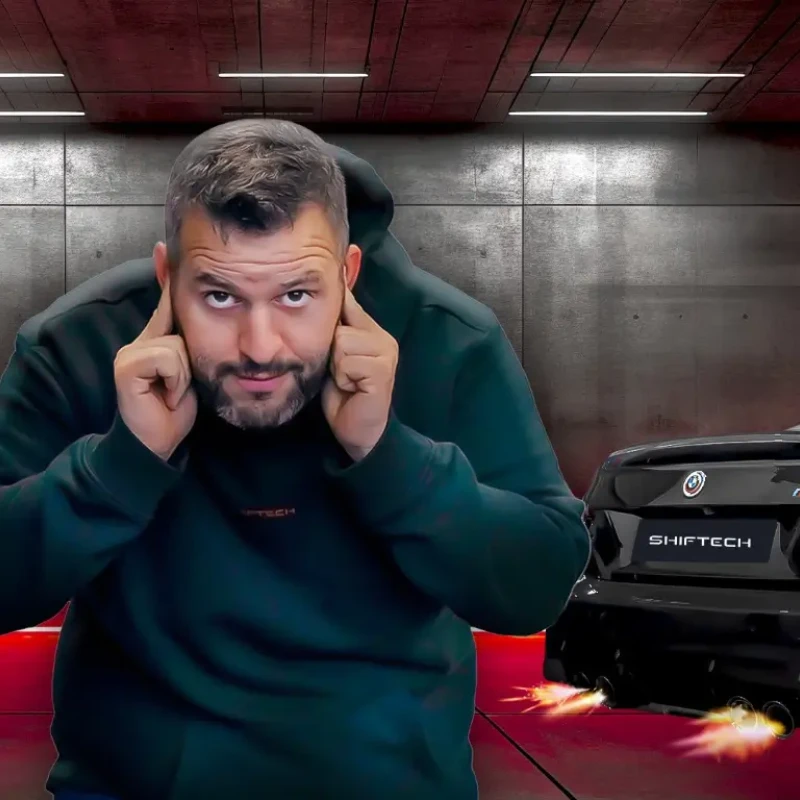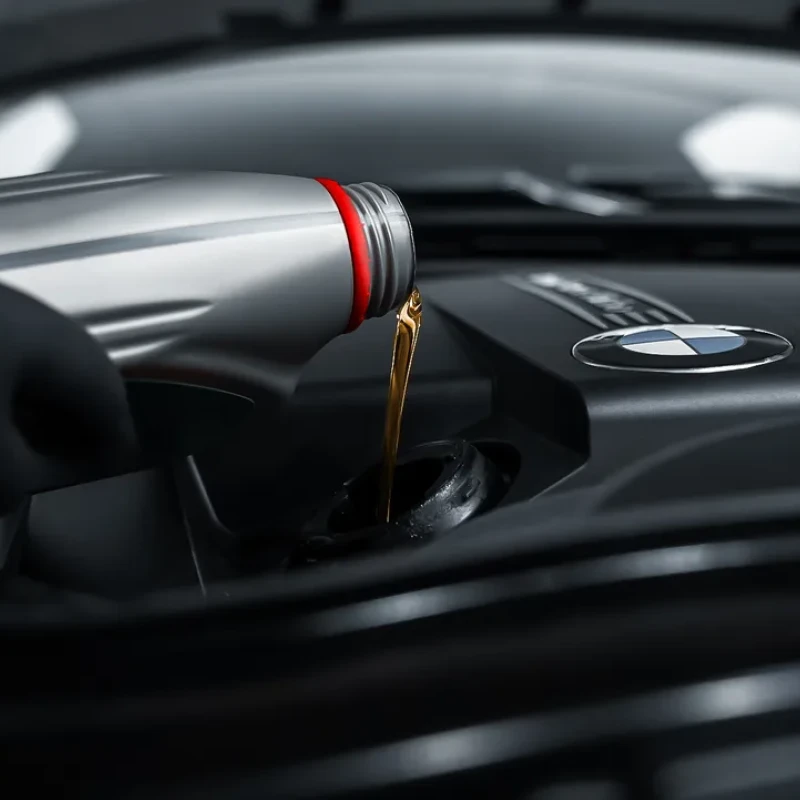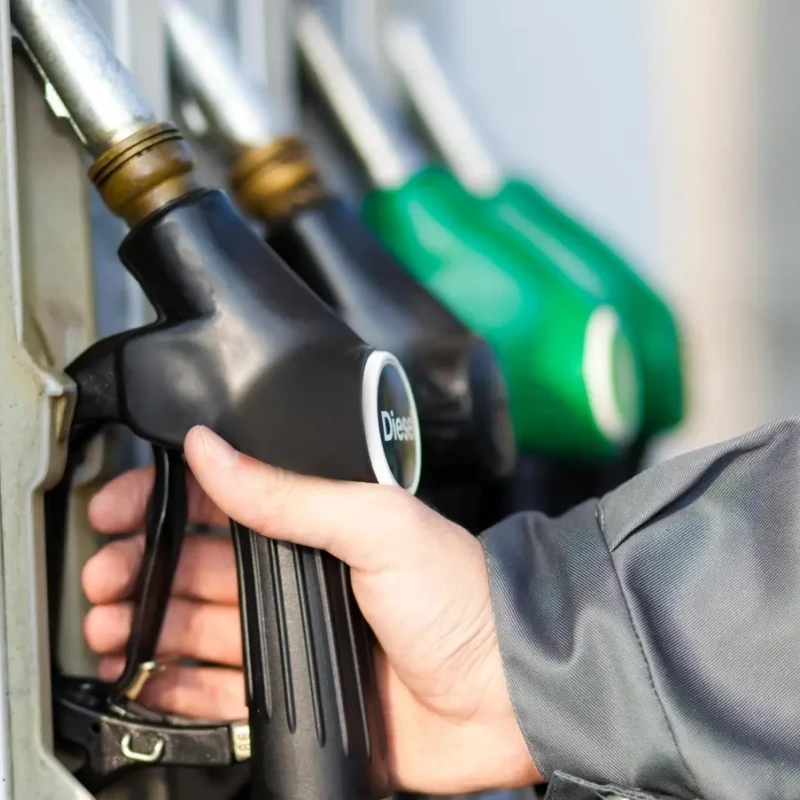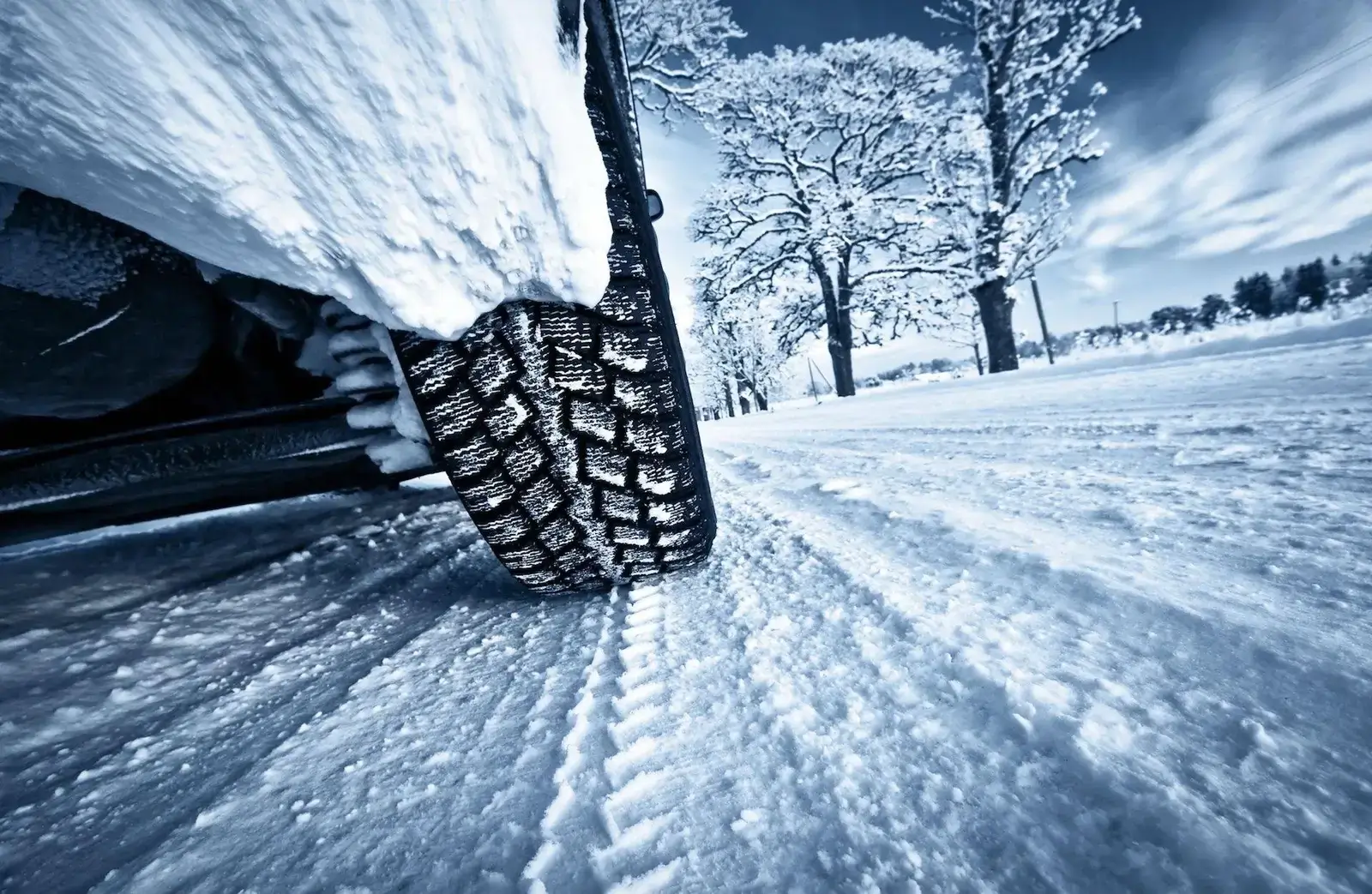
4-wheel drive transmissions
Winter is approaching, the cold is slowly setting in, the air is denser and your intercooler is colder. As you've no doubt noticed, your car suddenly feels more responsive and performs better.
But with winter comes snow, and although we didn't have the pleasure of much of it in 2016, it has been here recently. In these wintry conditions, many motorists are skittish at the thought of having to take to the road and find themselves in a tricky situation with their vehicle. What's more, manufacturers are well aware of this!
That's why, for some weeks now, you've been seeing adverts from BMW and Jaguar promoting their 4-wheel drive systems and offering special deals on them.
Quattro, xDrive, Torsen, Haldex
While the names vary from brand to brand (e.g. Quattro, Xdrive, 4-Matic, etc.), so do the technologies used. Worse still, you may find two different systems under the same name. to help you find your way around, let's take a quick look at the 4X4 solutions currently available on the most popular vehicles.
To tackle the subject of transmissions, here are a few important technical concepts that will be repeated several times in this article.
Longitudinal engine: A longitudinal engine is one that runs lengthways. whether in-line, V-twin or flat-six, the layout of a longitudinal engine gives the vehicle a natural balance.
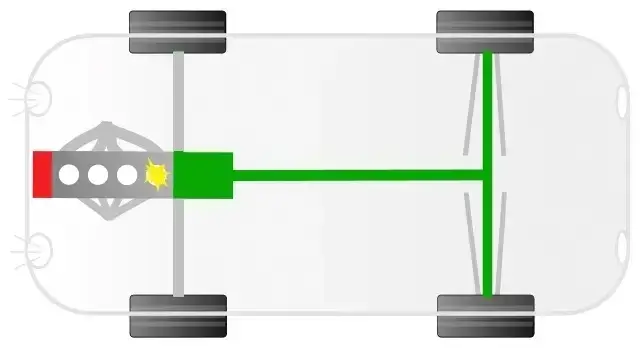
Transverse engine: the transverse engine is placed in a cantilevered position, i.e. perpendicular to the vehicle's direction of travel. Less sporty, this arrangement has a certain tendency to understeer (when the vehicle pulls straight into a roundabout, for example).
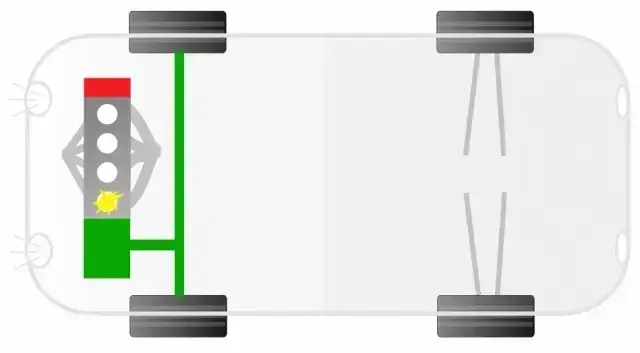
The advantage of such an arrangement lies in the reduction in engine space (allowing a smaller bonnet) and also in the reduction in engine-related costs. Coupling to the front wheels is simpler and less expensive with a transverse engine than with a longitudinal engine. As you can see, this type of engine is mainly used for smaller vehicles.
Differential: All vehicles are fitted with at least one differential. As the name suggests, a differential allows two wheels on the same axle to be driven at different speeds or with different force. The simplest example to understand the need for a differential is to take a vehicle that is turning:
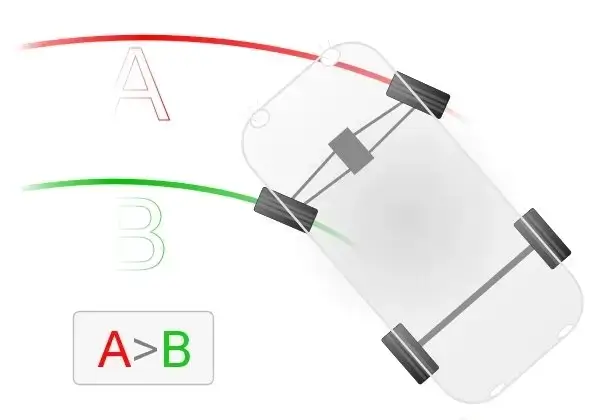
As this illustration shows, thanks to the differential, the inner wheel (B) can turn more slowly than the outer wheel (A). Unfortunately, in certain situations, the differential can be restrictive. When there is more grip on one side than the other, all the torque will be transmitted to the wheel with the least grip.
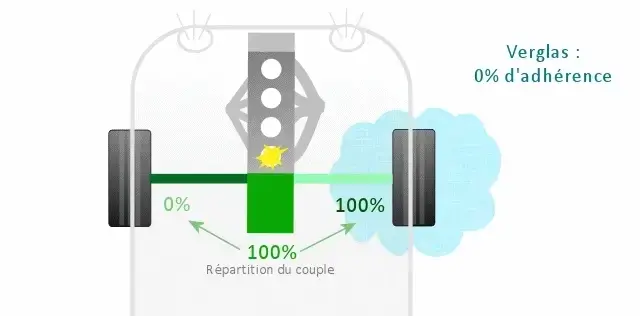
As a result, the vehicle will be stuck with one wheel spinning and the other at a standstill, a situation with which everyone is familiar. To counter this, there are solutions called differential locks or limited-slip self-locking systems which, in the case of the latter, brake the slipping wheel so that the torque is transferred to the wheel where there is grip.
4X4 transmission: There are several ways of driving a vehicle's 4 drive wheels, which is the subject of this article. One of them is to install three differentials. One on the front axle, one on the rear axle and one centre differential. The purpose of the centre differential is to transfer torque between the front and rear axles. Some centre differentials are locked at 50/50, giving equal torque between the two axles, while others, more recent models, are variable.
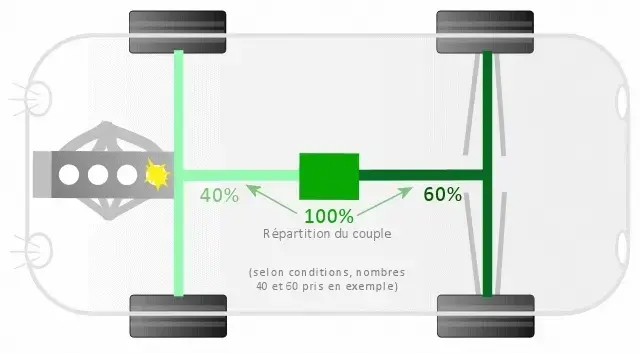
The Quattro system (Torsen)
The Quattro system is undoubtedly the best-known, currently equipping one in every four Audi cars, which just goes to show how widespread it is. Audi has been developing its Quattro system for 25 years. As with most brands, Audi began by offering a system with a 50/50 locking central differential, i.e. with torque distributed equally to the front and rear axles.
Later, Audi decided to use a Torsen (Torque Sense) differential capable of varying the torque between the two axles. Reserved for longitudinal engines, this differential is calibrated for a standard 40/60 torque split (i.e. 40% to the front and 60% to the rear). As stated, the purpose of the Torsen is to vary torque in order to obtain maximum grip.on the 5th and 6th generation Torsen, the system allows up to 70% of torque to be sent to the front and up to 85% to the rear.
For the sportiest vehicles, Audi has introduced the Quattro Sport differential which, by means of two multi-plate clutches housed in the rear diffithis technology, known as 'torque vectoring', allows the rear wheel to be accelerated at the same time as the front wheel. This technology, known as 'torque vectoring', combined with the classic Quattro system, means that the vehicle is literally glued to the road.
The advantage of the Quattro system (Torsen) is that it offers permanent 4X4 performance (particularly with the torque vectoring system) when the vehicle is in motion. Thanks to the use of a central differential, which makes it a permanent 4X4, the Quattro is one of the best on the market. Note, however, that on the Ultra version, the Quattro can be disengaged to limit fuel consumption. While this can indeed limit fuel consumption, it transforms a permanent 4X4 into an AWD (all-wheel drive) system, which means that you can only benefit from 4X4 when the electronics decide that the vehicle really needs it. This situation is similar to the Haldex principle, described below.
Another downside to Quattro is that it acts passively and its differential cannot be 100% locking (on either axle). Here's a video sponsored by BMW that puts a Quattro system and an Xdrive system to the test.
As a reminder, Quattro can only transfer a maximum of 85% to the rear and 70% to the front. To make this possible, the system relies on two things. The first is to have enough force/speed for the Torsen to activate. Indeed, like any differential, there is always a certain margin before the mechanical system is activated. Secondly, the ESP (Electronic Stability Program) must be activated, as the Torsen system relies on the ESP to accelerate torque transfer and brake the slipping axle. However, in this video, ESP is deactivated. When the torque is low and the speed of rotation is also low, the Torsen is not yet locked, so it naturally distributes torque to the axle that is slipping (like any differential, the torque goes where the slippage is). If we consider that 85% of the torque can be sent to the rear, only 15% remains at the front. Given the incline (carefully chosen by BMW) and the operator's lack of insistence, there is not enough torque left on the front axle for the Quattro vehicle to extricate itself from the tricky situation it finds itself in. Audi then published another video to counter BMW's bad publicity. In order to give themselves the best chance of success, they carefully selected a torquey vehicle (in this case an SQ5), with ESP activated, placed on a much lower gradient than BMW's and with the Audi Quattro in front.and above all driven by an operator who demanded enough torque from the vehicle for the Torsen system to work without the slightest problem.
Summary
- High-performance system when the vehicle is moving off
- Stable system with measured torque variation
- The Ultra version loses the benefits of permanent 4X4 in favour of fuel economy
- In certain specific conditions, Quattro has a tendency to send too much torque to wheels that spin
The Quattro / 4 motion system (Haldex)
Contrary to what you might think, two Quattro systems are not necessarily the same. in fact, VAG has decided to fit a Haldex system on transverse engines*.
For a better understanding of how the Haldex works, here's a video explaining the system.
The main difference between the two systems is that the Haldex is an electro-hydraulic unit that is activated only when a difference in speed is detected between the front and rear axles (i.e. when the vehicle is spinning). via a hydraulic piston pump, the system then applies pressure to the clutches to send more or less torque to the rear axle. as you can see, when grip is optimal, the system is inactive and your vehicle is no longer a 'Quattro', as it only operates in front-wheel drive. This system is known as AWD (all wheel drive) when a 4X4 is not mechanically permanent.
In practice, this system performs very well from a standing start or on very slippery surfaces. The video example above highlighting a problem with the Torsen system would have been quite different if the vehicle had been fitted with a Haldex transmission. in fact, the traction-oriented system would have had no problem getting out of this situation. However, the Haldex system is not without its faults. Despite the fact that version 5 of this system has made considerable progress in terms of responsiveness, when there are changes in grip, the system doesn't anticipate enough and a delay is noticeable to the driver.
You might wonder why the Haldex isn't permanent, but that's because it's not designed to send torque to the rear forever. in this respect, and for the record, VAG showed off the qualities of its new Golf 7 R on snow and in Norway with full knowledge of the facts, as this enabled them to keep the Haldex system operating almost constantly while maintaining acceptable temperatures for the device.
* Haldex is fitted to the Audi A1, S1, A3, S3, RS3 and all the Group's 4 Motion models except the Amarok, Phaeton, some Passats and Touaregs, which are fitted with Torsen.
Summary
- Space-saving AWD (all-wheel drive) system
- Performs well in difficult situations (sometimes even better than Torsen)
- The Haldex, even in version 5, still takes a while to switch from front-wheel drive to 4-wheel drive
- The position of the engine combined with the latency of the system means that the vehicle is always under steer
The Xdrive system (BMW)
Xdrive is the intelligent 4-wheel drive system developed by BMW. Xdrive is a 4X4 in which torque is distributed between the front and rear axles by means of a multi-disc clutch located in the gearbox (known as a transfer case). This is not a permanent 4X4 (4WD), but rather 'all-wheel drive' (AWD) technology.
In normal driving conditions (i.e. on the flat, with straight wheels and no wheel slip), the system is split 40/60, as with Quattro. The difference with the other systems lies in the fact that the Xdrive transmission is predictive. It varies torque continuously according to information such as steering wheel angle, accelerator pressure, speed, torque, etc. sent directly via the DSC (ESP). This allows the torque to be transmitted where it is needed. The variation can go from 0 to 100% from the front axle to the rear and vice versa. At very high speeds (over 150km/h), the Xdrive system operates in rear-wheel drive mode (100% on the rear axle).
To better understand how the Xdrive system is predictive, here are two scenarios. In the first case, shown below on the left, the vehicle is in an understeer (i.e. pulling straight ahead). The Xdrive transmission will therefore adapt the distribution at the rear of the vehicle to restore its balance. Conversely, in the illustration on the right, in the event of slight oversteer (vehicle starting from the rear), the transmission will find the balance by offering a 50/50 ratio. The difference in favour of the front axle would have been greater if the oversteer had been more pronounced.

Like Quattro, Xdrive can be fitted with a torque vectoring system, known here as DPC (Dynamic Performance Control), which also transfers torque to the outside wheel to create a yawing movement around the car's vertical axis.
However, not all Xdrive systems are created equal. In fact, the latest X1 and 2 Series Active Tourer are equipped with a transverse engine, offering front-wheel drive in a BMW for the first time. For these engines, BMW has therefore chosen, like Volkswagen/Audi, to offer an Xdrive version based on the Haldex (in its 5 version). at BMW's request, when the vehicle loses traction, the Haldex sends more torque to the rear wheels to restore BMW's character (information to be confirmed). The transition from front-wheel drive to 4-wheel drive takes just 250ms.
Xdrive on a longitudinal engine is therefore a high-performance transmission which, in its latest generation, transfers torque quickly without disrupting the vehicle's dynamism, as is the case with some Haldex systems (and even BMW's). From a balance point of view, on the other hand, the Quattro system is more stable, with less torque variation, which limits mass transfer. On the downside, the Xdrive system sometimes struggles with reliability. Highly sensitive to differences in tyre wear and working continuously on both axles, it's not uncommon for the transfer case to kick and, in more serious cases, break. To limit problems it is recommended that regular oil changes are carried out and that tyre wear is checked to ensure that it is the same on all tyres.
Summary:
- Dynamic AWD
- Combines the best compromise between Haldex and Torsen, enabling it to extricate itself from tricky situations
- The transfer case (Xdrive) is fragile and needs attention
- Torque transfer sometimes noticeable during sudden changes of direction
4-Matic (Mercedes)
4-Matic is the name given to Mercedes' 4-wheel drive system. The system is not new, having been installed on the first car in 1987, an E-Class W124. In its first generation, the 4-Matic system was already quite complex for its time, with 3 differentials. The first was open on the front axle, while the centre and rear could be locked.
Depending on the information collected by the ABS, an electronic computer dedicated to the transmission would control the two hydraulic clutches in the transfer case (central differential) according to three scenarios:
Case 0: The vehicle is driving normally, with torque sent to the rear only
Case 1: The computer detects a loss of grip via the ABS. Depending on the loss, it sends either 35% or 50% of the torque directly to the front axle and locks the central differential.
Case 2: Despite the 50/50 locking of the central differential, if one of the rear wheels continues to spin, a command is sent to lock the rear axle. Locking the rear axle is known as ASD (Automatic Locking Differential).
As you can imagine, the reaction times were those of the time, but on the mechanical side, Mercedes had something very powerful.
However, the system was expensive and required particular attention in terms of maintenance. It was not uncommon to encounter a problem with the ECU or the ABS (still in its infancy at the time), which could cause the 4-Matic system to malfunction.
Currently, only the G-Class (and certain MLs equipped with the OffRoad package) have the very best in Mercedes 4-wheel drive. The transfer box can switch between two gear ratios: road and off-road, while the differentials (front / centre / rear) can be locked individually from the centre console. All it takes is one wheel to get the G-Class out of a tricky situation.
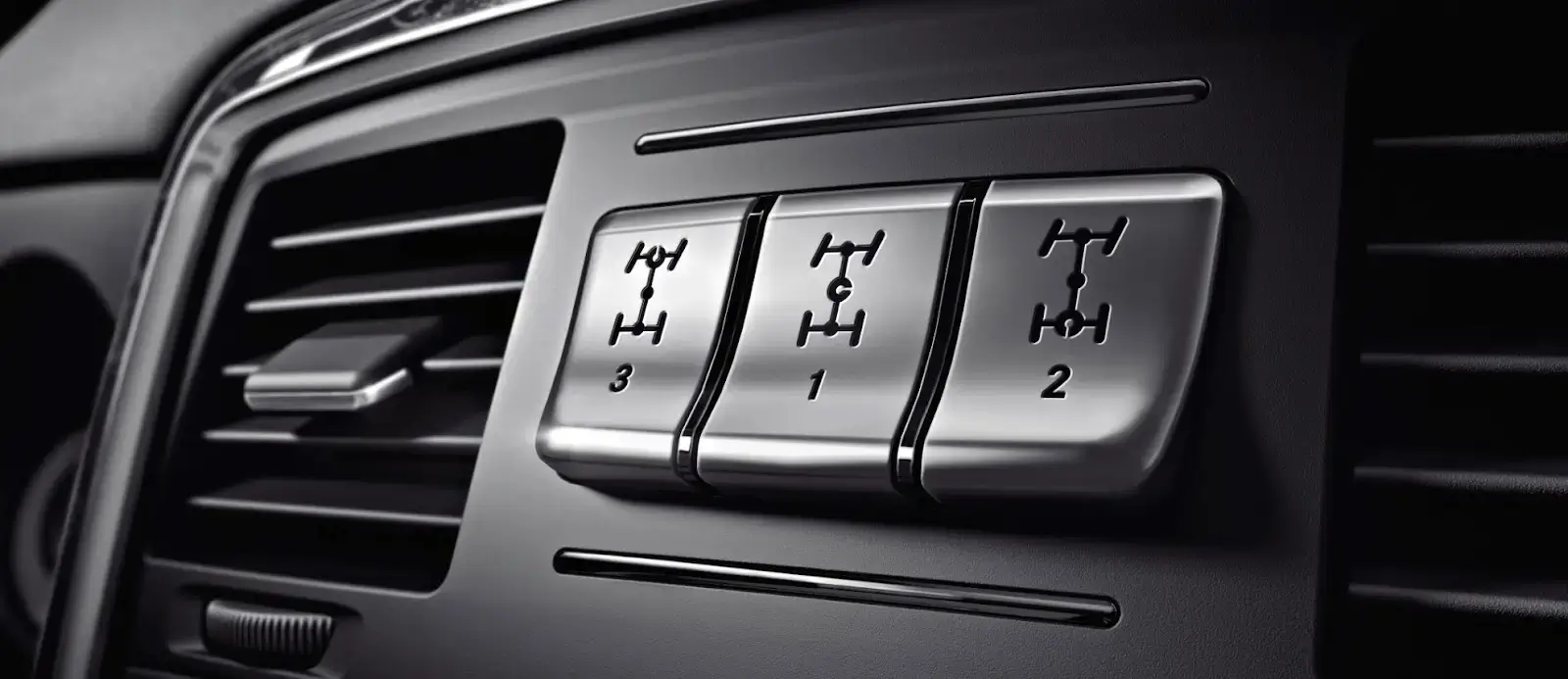
For the brand's other vehicles equipped with longitudinal engines, Mercedes has decided to go back to something simpler and less expensive. The current 4-Matic has three non-locking differentials (in certain cases, the central one can be locked at up to 50Nm) with a fixed 35/65 split (front/rear). However, this ratio can change depending on the type of vehicle (33/67 for AMG, 40/60 for SUVs). Mercedes uses the 4X4 Electronic Stability Program (4-ETS) and ESP to brake the wheels that are slipping and thus counterbalance the torque on the wheels with grip. In terms of performance, this system is inferior to those offered by competitors and even inferior to what the E-Class-W124 offered at the time. It's a shame.
For vehicles equipped with transverse engines (A-Class, B-Class, CLA, GLA, etc), Mercedes has designed a transmission very similar to that offered by Haldex. Here again, when the vehicle is driving normally, it is in front-wheel drive. It is only when a loss of grip is detected or the vehicle starts to corner that torque can be sent to the rear axle. Unlike the Haldex, which can send up to 100% of the torque to the front or rear axle, the 4-matic transverse engines can only send 100% to the front and 50% to the rear.
Summary:
- First-class transmission on the old E-Class W124
- Individual locking of all three axles on the G-Class (and the ML with the OffRoad package)
- Basic 4-Matic transmission on the latest vehicles relying (too much?) on 4-ETS electronics.
What about other transmissions?
It's difficult to detail all the technologies in a single article, but of course there are many others, starting with the one developed by Subaru. they call it Symmetrical All-Wheel Drive. Thanks to their flat engine (Boxer), the balance of the engine and transmission is perfect, so that there is a symmetrical balance between the left and right sides. subaru relies above all on the overall balance of the transmission, to which, depending on the model, increasingly high-performance solutions adapted to the vehicle used can be added.
Below is a representation of the Subaru system with its flat engine (Boxer).
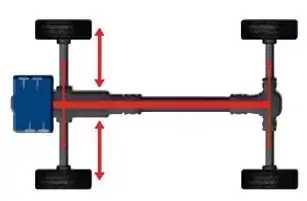
For comparison, below is a representation of a transverse engine with a 4-wheel drive system equivalent to the Haldex.
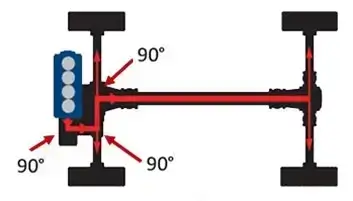
You can quickly see that this layout is less balanced and that the weight is distributed too much towards the front of the vehicle. In fact, this is generally the criticism levelled at Haldex-equipped vehicles: the extra weight at the front makes the vehicle understeer.
Although Subaru's symmetrical system has nothing to envy from other systems, Subaru goes even further, offering both a central differential where the user himself can define his torque retorque split (between the front and rear axles) or lock it directly (50/50), as well as a self-locking Torsen differential at the rear and torque vectoring (available on WRX models).in terms of efficiency and performance, this is one of the best transmissions to date.
I couldn't end this article without mentioning the transmission in the latest Ford Focus RS MKIII, which might never have seen the light of day. In fact, Ford, which has a transverse engine, naturally turned to Haldex to try out the latest generation of the system with a view to implementing it. After a few tests, the engineers were disappointed because it did not deliver the expected dynamism. Ford therefore decided to work with GKN on the basis of their Twinster solution, already present in the Land-Rover Evoque in particular. Like the Haldex, this transmission has been designed for transverse engines. However, unlike the Haldex, GKN's transmission can operate permanently in 4X4 mode and, better still, send up to 70% of torque to the rear axle. But this was not enough to deliver the expected dynamism. To achieve this, Ford and GKN worked on a unique torque vectoring system that not only gives more torque to one of the rear wheels (up to 100%!), but also accelerates the speed of the outside rear wheel. Innovative, to say the least, since this is the first torque vectoring system of its kind on a transverse engine.
Conclusion
There are, of course, other systems, such as Honda's (SH-AWD, which is very similar to Subaru's), which are very effective, but it is impossible to mention them all, just as it is impossible to explain each of them in more detail. At the end of this article, which could be described as an introduction to certain 4-wheel drive systems, you will see that not all these systems are equal. As is often the case, manufacturers try to please their customers with a system that is sometimes more efficient, sometimes cheaper or sometimes truly innovative. Don't hesitate to react to this article by commenting on its content or by giving us your impressions if you have the opportunity to use a 4-wheel drive system on a daily basis.
Learn more
View articles
Similar
